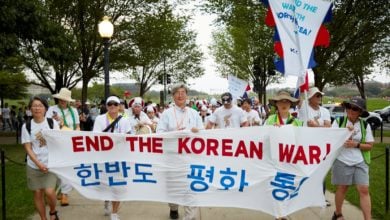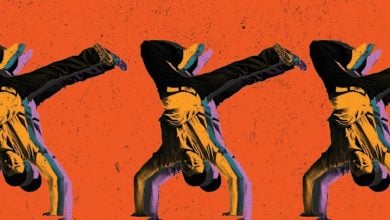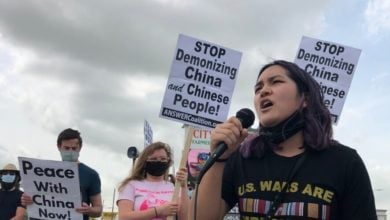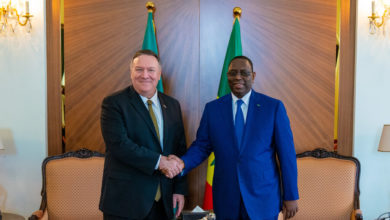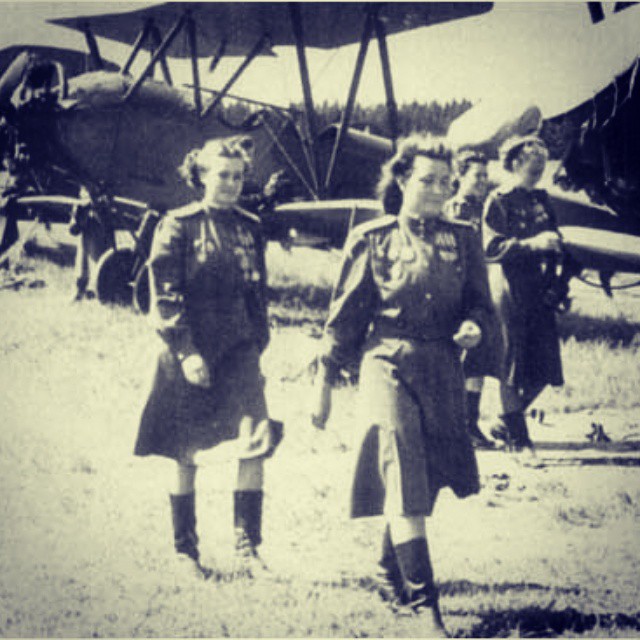On December 17 Sony Pictures cancelled the release of the movie “The Interview” which used racism as “humor” and which characterized U.S. CIA agents as comic heroes on a terrorist mission to assassinate the current north Korean head of state.
Prior to that, on December 10, Sony announced that the film would not be released in Japan, south Korea, or anywhere in the Asia Pacific Region other than Australia and New Zealand. They said that the decision had been made long before then.
While the company is now claiming that the cancellation is due to physical threats made in emails, in fact the cancellation comes after a huge wave of protest against screening a movie that calls for the terrorist assassination of an existing leader.
Protest movements can change the minds of the “entertainment” corporations that rule Hollywood. For example, on May 1, 2013 the Walt Disney corporation filed 33 applications to trademark the Day of the Dead. They wanted to make a movie with a Day of the Dead theme or title and then make money off of anything that used that name or phrase. Within days a massive internet-based protest declared that Mexican heritage was not for sale and forced Disney to withdraw its application by May 6.
Hacking exposes million dollar salaries, racism and sexism
When reviewing Sony’s activity, it is important to remember the role of U.S. financial institutions in the control of Sony. Some of the biggest institutional holders of Sony stock are Primecap Management Company based in California, Cambiar Investors based in Colorado, and more familiar names like Morgan Stanley, Bank of America and Vanguard.
Sony’s cancellation occurs in the context of a Nov. 24 hacking of Sony’s computer system and the subsequent release of embarrassing information. Emails on their system suddenly became public. Everyone could now see that at least 17 Sony administrators had pre-bonus salaries of over $1 million- and that there was inequality even within that group.
The emails exposed racist comments by Sony Pictures co-chairman Amy Pascal about President Obama’s movie preferences. They also revealed that women actors (Jennifer Lawrence) were paid less than men in equivalent roles. And they showed slander and arrogance in comments about Black actor (Kevin Hart) for insisting on just compensation.
In a town fed up with racism from Los Angeles Clippers owner Donald Sterling to racist police brutality and harassment, there are a lot of people glad to see the truth about Hollywood executives being exposed. But who did the U.S. government try lay the blame on? Without any proof, they blamed North Korea- the Democratic Peoples Republic of Korea.
The DPRK immediately denied any connection to the hacking, yet the unsupported claims continue.
Hollywood, media and US racism against DPRK
The same system that spawns racism in Hollywood is also at work against the people of northern Korea and especially against the leadership of the DPRK.
In order to shape public opinion and to whip up a war fever, the U.S. government and following their lead the media create racist characterizations of the DPRK that are repeated so many times that to many they may seem like the truth.
The DPRK is called a “Hermit Kingdom,” its leaders “dictators” and its people “robots.” The country is called “isolated” and unknowable, even though the isolation is the work of U.S. nuclear weapons pointed at it, U.S. troops massed on its borders and embargoes cutting it off from normal commercial ties with much of the world.
The reasons why “The Interview” is so provocative and clearly not a legitimate comedy can be found in the historical context that it occurs in.
The cancellation of the movie coincidentally occurred on the third anniversary of the death of the Korean leader Kim Jong-il. He was the target of some of the most viciously racist characterizations. Politicians and the main stream media frequently referred to him as crazy, though after a number of years they were compelled to change this to “crazy as a fox.” They frequently made fun of his hair or appearance and suggested that he was a buffoon – in a way that is never done with other world leaders. The New York Times, the LA Times, the Chicago Tribune, the Washington Post, ABC News, etc. all used characterizations like this repeatedly.
On July 31, 2003 John Bolton, then Under Secretary of State for Arms Control, gave a speech that contained so many outrageous personal slanders that he was taken to task for it during his 2005 UN Ambassador confirmation hearing. Secretary of State Colin Powell quickly came to his defense saying that the speech had been vetted by the State Department and reflected the views and attitude of the U.S. government.
Honoring the third anniversary of Kim Jong-il’s death, it is instructive to review the history of the U.S. relationship with Korea during his years as the leader of the DPRK.
This history shows why “The Interview” is so offensive and how it fits into a pattern of war threats made by the U.S. that are not fictional and definitely not comic.
Assuming leadership at a most difficulty time (1994)
When the north Korean leader Kim Il-Sung died in July 1994, the Wall Street Journal quoted government sources saying, “U.S. officials believe Pyongyang’s Communist regime might fall within months of the death of its creator.” This arrogant statement was a reflection of both the desire and the determination of the United States to crush the Korean revolution. Recalling some of the events of that period helps to highlight both the very difficult situation faced by Kim Jong-il as he took the reins of leadership and the fact that under his leadership the DPRK survived as a beacon of socialism and resistance to the plans of imperialism.
In January 1994, the U.S. announced provocative plans to send Patriot Missiles to southern Korea. Despite this war like move, the DPRK allowed IAEA inspectors to have extraordinary access to facilities. (Unfortunately the IAEA ultimately chose to violate the access agreement.)
In March 1994 the South Korean Defense Minister revealed that the United States had updated its Operations Plan 5027 which called for invading and occupying Pyongyang, regime change and the destruction of energy facilities, including attacks on nuclear plants at Yongbyon, which could then release devastating radiation. Accompanying that, as if to drive the point home, in March the United States revived its rehearsal for invading northern Korea with a massive “Team Spirit’ military exercise. At the same to President Clinton was using every opportunity to publicly align himself with the military industrial complex, making speeches at Boeing, and so on.
In April of 1994 the United States established a military nuclear crisis group aimed at northern Korea. In response to an array of such military maneuvers, in June the DPRK announced withdrawal from IAEA. President Clinton then increased the number of U.S. military forces occupying the south. He also called for increased economic sanctions, also an act of war. This was a very dangerous situation. But in mid-June a tentative agreement was worked out.
That was not the end of the sabre rattling. In September 1994, the United States Congress discussed the Nuclear Posture Review, which justified the modernization of U.S. nuclear weapons on the basis of deterring “rogue states,” an essentially racist term for any state that resisted U.S. imperialism. Thus while trying to deny any other country the right to develop nuclear energy or weapons for defense, the United States was increasing its nuclear weapon capacity. The same duplicity was at the root of the United States failure to abide by the terms of any of the agreements that it made with the DPRK.
The DPRK not only survived U.S. threats and machinations for regime change in 1994, but continued to successfully resist them for the next 17 years under the leadership of Kim Jong-il. For everyone who cares about peace and liberation, the Korean people’s perseverance gives us an example of what is possible when a people are united against imperialism.
1997
Only three years after predicting the downfall of the DPRK and the associated claims of the superiority of capitalism, a massive economic crisis swept Asia and the capitalist world. Millions found the lives that they had struggled to improve were now on the chopping block as hundreds of thousands were laid off, and others faced wage cuts. Western bankers made a lot of money off of the crisis and misery of the workers. Big companies based in the U.S. and elsewhere swooped in to swallow companies for a fraction of their worth. Huge strikes and demonstrations in southern Korea challenged this transfer of wealth.
In the northern part of Korea though, where economic difficulties arose in part due to the world character of the crisis and the impact of the fall of the USSR, people still had free health care and education. They could address the situation collectively. Instead of throwing workers onto the scrap heap, the nation was able to mobilize in an arduous march through the crisis together. The success of that march was based on the socialist system and the leadership of the DPRK, led by Kim Jong-il.
In this context, in 1997 once again a CIA study concluded that the DPRK economy was deteriorating so rapidly that the government of the DRPK led by Kim Jong-il “cannot remain viable for the long term” and could fall within five years. (Documents declassified October 26, 2006). The document stated that “political implosion stemming from irreversible economic degradation seems the most plausible endgame for North Korea.”
The United States continued to press for war to try to rattle the DPRK and bring it down. In September 1997, 100 countries signed a treaty outlawing anti-personnel land mines. President Clinton however refused to sign saying that he wanted to use land mines against the Korean people. In June 1998 the United States military conducted simulation training for a preemptive nuclear bomb attack on the DPRK. This was described in detail in a July 14 interview when Wing Commander Randall K. Bigum said that the “last phase of the exercise, the employment phase . . . required us to fly those airplanes down to a range in Florida and drop” the BDU-38s. That is they openly practiced dropping a nuclear bomb on the DPRK.
Following that act and similar instances, the DPRK stepped up defenses and testing of missiles. The United States then used these defensive tests as an excuse for more war moves.
2001
Five years later in 2001, just at the point with the CIA said that the DPRK was likely to fall; it was in fact not only alive and well but expanding in its influence. While the United States had been trying for decades to isolate the DPRK, Kim Jong-il had led the country to unprecedented levels of diplomatic recognition.
During the 1960s and 1970s the DPRK had already established a remarkable record on solidarity and recognition by the states and liberation movements in Asia Africa and Latin America. The DPRK contributed critical aid to Ethiopia, Angola, Zimbabwe and a number of African nations in the 1970s and 1980s. It was a firm supporter of the African National Congress of South Africa – while the United States labeled that South African group as “terrorist.” In 1998, South Africa honored that support by establishing full diplomatic relations with the DPRK.
In 2000 and 2001, the efforts of the DPRK led by Kim Jong-il resulted in the establishment of diplomatic relations with the European Union, the United Kingdom, Germany, Spain, Italy, Netherlands, Belgium, Canada, and New Zealand among others. Australia had cut off relations in the mid-1970s, but reestablished relations in 2000. The Philippines established diplomatic relations in 2000 and Turkey did in 2001.
The United States persisted in using racist language like the “hermit kingdom” to try to isolate the DPRK but it wasn’t working in the international arena in the way they wanted. The DPRK was able to break through that veil of lies.
The most notable achievement of the DPRK during this period was the historic summit held on June 15, 2000 between southern and north Korea. For decades the DPRK had pushed for steps toward unification. Their actions have reflected the deep desire of the Korean people to end the divide on the peninsula and end the US occupation of the south.
On June 15, 2000 Kim Jong-il and south Korean President Kim Dae-jung signed a historic statement at the conclusion of a major summit agreeing to resolve the question of reunification; to resolve problems allowing separated families to visit one another; to resolve question of long term political prisoners in the south and to work together for the development of the national economy.
This gave great hope to Korean and peace loving people everywhere.
War mongers however had a different idea. In October 2000, DPRK officials met with President Clinton and Secretary of State Madeline Albright visited Pyongyang to meet with Kim Jong-Il. But formal meetings were that is as far as US capital was willing to go in the interest of peace. They refused to take concrete steps for peace such as arriving at a peace treaty with the DPRK and removing troops from Korean soil. The following year the Pentagon’s Nuclear Posture Review identified the DPRK as a target that required preparation for a U.S. nuclear bomb strike.
As the people in northern Korea called for peace and the people of southern Korea called for the same thing (while GM workers in Korea battled the company and the sever police repression), the U.S. only talked of war. In 2002 President Bush called the DPRK part of an “axis of evil” as part of a campaign of lies to whip up support for war in Iraq and Korea. Young people in the southern part of Korea had a response. Less than a month after Bush’s statement, students occupied the American Chamber of Commerce in Seoul. A week later 100,000 workers went on a general strike in the south against unfair labor laws that were modeled after those in the U.S. A week after that, more massive strikes took place against privatization of electric power and against the auto and steel giants.
After being clearly and explicitly targeted by Bush, the DPRK led by Kim Jong-Il took further steps to guarantee the safety and security of its population. By doing so, they laid the basis for preserving the country against imperialist onslaught.
In May 2002, Secretary of Defense Donald Rumsfeld issued a “Defense Planning Guidance” which called for the development and deployment of nuclear bombs for deeply buried targets in three “rogue nations” including the DPRK. The following month, President Bush spoke at West Point and outlined a preemptive strike strategy to be used against the DPRK.
On June 13, 2002, U.S. military personnel ran over and killed two 14-year-old girls in southern Korea. At first the U.S. refused to arrest the culprits but a massive movement filled the streets with protests in such a powerful way that the U.S. was forced to arrest them. This incident further exposed the U.S. colonial relationship with southern Korea.
Three months later on September 17, 2002 the United States issued its “National Security Strategy” which included a more proactive preemption doctrine to be used against the DPRK and others. In December 2002 the DPRK was named in a new, secret Nuclear Posture Review as one of seven nations to be attacked with nuclear weapons when they were ready to start a war.
Showing the depth of the desire for peace, millions of people joined demonstrations in 2003 to stop the U.S. war against Iraq. Demonstrations also took place in southern Korea to stop any role by that country to support the U.S. But Bush went to war anyway and South Korea, under pressure, also contributed to the U.S. war and occupation. On August 15, 2004, 10,000 protested at the U.S. embassy in Seoul, tearing down the U.S. flag and demanding U.S. troops out of Korea and cancelation of the order for 3,000 Korean soldiers to go to Iraq.
During this time, the DPRK firmly opposed the U.S. war in Iraq and even engaged in talks with the U.S. and others to try to defuse the situation on the Korean peninsula. On September 19, 2005 the DPRK even agreed to end its nuclear weapons program in return for security, economic and energy benefits. In October 2006 the DPRK demonstrated its technological and military capacity to defend itself against U.S. nuclear threats by showing that the US was not the only nuclear power.
2007
On February 13, 2007, the DPRK agreed to new terms including disabling nuclear facilities, allowing inspectors back in on the condition that it get fuel oil and other material resources. The people in the south pressed the United States too. In May on the anniversary of the Gwangju massacre, Incheon protestors demanded that U.S. troops get out of Korea. In July Korean farmers threw cow dung at a supermarket counter selling US beef, in the wake of the U.S. refusing to allow Korean beef imports.
Finally on October 2, 2007 to October 4, 2007 Kim Jong-il met south Korean President Roh Moo-hyun in a second historic summit. They reaffirmed the June 15, 2000 Joint Declaration and agreed to ease military tensions, work for a permanent peace to end the Korean War and to push for humanitarian reunification of separated families.
Working for peace, the DPRK demolished the cooling towers at its Yongbyon nuclear reactor site on June 27, 2008. In return the step by step process meant that the U.S. was to provide aid and remove the DPRK from the list of countries sponsoring state terrorism.
However by September 2008 it was clear that the United States was not going to remove the DPRK from its list of state sponsors of terrorism. The U.S. was not going to live up to its agreements, so once again the leadership of the DPRK had to prepare for the worst and increase defenses.
In December 2008 the DPRK removed itself from the six party talks which were meaningless unless the U.S. was going to live up to its commitments.
That was about the same time that the struggle in south Korea against the U.S. Free Trade Agreement was heating up. To stop U.S. exploitation, the opposition party used hammers to smash open the Parliament doors protesting the Grand National Party’s plan to sign the agreement. Weeks later police killed five tenant protestors, beating them and burning them alive. So much for human rights in southern Korea where protests are crushed and where thinking anything positive about northern Korea is a crime.
2009
On June 12, 2009, at the insistence of the U.S., the UN Security Council passed increased sanctions against the DPRK.
On October 22, 2009 United States Defense Secretary Gates made a speech at the U.S. base (Yongsan Garrison) in Seoul South Korea in which he said, “the United States is committed to providing extended deterrence using the full range of American military might – from the nuclear umbrella to conventional strike and missile defense capabilities..” to attack the DPRK.
On October 28, 2009 President Obama signed off on the largest military budget in U.S. history.
All of this added up to increased war danger. Southern Korea was getting the green light for provocations. On November 10, 2009 southern Korea attacked at DPRK patrol boat.
Two months later, in February 2010 the Obama administration announced that it was going ahead with arms sales to Taiwan, an additional provocation revealing the global strategy of the U.S. against China and the DPRK. (What would the US government do if China or the DPRK were to send advanced weapons to independence groups in Hawaii, Alaska or Puerto Rico?)
2010
On February 22, 2010, Kathleen Stephens, the U.S. Ambassador to South Korea, discussed the collapse of the DPRK with other foreign officials. This was recorded in a cable sent to the U.S. State Department and then later reprinted by the New York Times. They predicted the political collapse of the DPRK “two to three years” after the death of Kim Jong-il. Once again those predictions, and all of the efforts by the U.S. to make them come true have failed.
While the DPRK has continually worked for peace, the United States has continually prepared for and threatened war.
The extent to which the U.S. would go to press its war drive against the DPRK was revealed after March 26, 2010 when a south Korean Navy ship sank. The U.S. immediately claimed that the DPRK was the cause of the boat sinking. It tried to press all other countries into condemning the DPRK. On July 9, 2010 despite U.S. pressure, a UN presidential statement on the sinking of the Chenoan did not condemn the DPRK. On July 20, 2010 the U.S. again lost a vote at the ASEAN conference to get resolution condemning the DPRK. So on July 21 the United States announced that it would unilaterally tighten economic sanctions.
Four days later the United States began war “games” simulating war with the DPRK. The “games” included a nuclear aircraft carrier, 20 ships with 8000 troops and 200 planes. Then on August 16, 2010 a new round of war games began with 30,000 GI’s and 56,000 South Korea troops plus 400,000 south Korean civil defense workers.
A few months later on November 11, 2010 a G-20 meeting opened where the United States demanded that China devalue its currency and that southern Korea allow more U.S. cars and more U.S. ownership of Korean corporations. The U.S. effort exposed its drive to exploit all of Asia. It failed in achieving these objectives at this meeting.
A year later, on November 17, 2011 President Obama gave a speech in Australia where he announced his “Asia Pivot.” The strategy involves increasing United States Naval forced in the Pacific from the current 10 percent of all U.S. naval forces to 60 percent by the year 2020.
This was the context for Kim Jong-il’s tenure as the leader of the DPRK. He had to face the greatest imperialist power, which at every moment was attempting to undermine and overthrow the achievements of the people in the DPRK. He had to grapple with maneuvers to isolate and economically strangle the DPRK. He had to face racist language mixed with calls for regime change as well as plots and actions designed to whip up war hysteria. Through it all, he guided the DPRK along a path that has allowed it to survive and develop. In that regard he was a tremendous inspiration to those around the world resisting imperialism.
Human rights
Finally it should be pointed out that Kim Jong-il was very concerned with education, youth and culture.
The contrast between the United States under the leadership of several presidents compared to the DPRK under the leadership of Kim Jong-il in the area of human rights is striking.
In the area of human rights, under the leadership of Kim Jong-il the Democratic People’s Republic of Korea ratified the UN Convention on the Elimination of All Forms of Discrimination against Women in 2001. The United States has never ratified this convention, showing the hypocrisy of the United States on human rights. The DPRK also ratified the UN Convention on the Elimination of All Forms of Discrimination against Women in 1989 and ratified the Convention on the Rights of the Child in 1990. The United States has not ratified either one. In each case the United States is nearly alone in the world in failing to ratify these simple rights conventions.
Similarly the United States has refused to ratify core International Labor Standards on child labor, forced labor, equal pay for men and women performing work of equal value; discrimination in employment, etc. In contrast the DPRK enshrines many rights in its constitution that workers here are still fighting for such as the right to a job, free health care and education, women’s rights not only to basic equality but also to paid maternity leave and reduced hours or work for mothers with many children. As parents here struggle to pay for day care, the DPRK constitution establishes free day care as a right.
The injustices imposed on the Korean people have taken several forms. On June 28, 2005 a U.S. Court of Appeals ruled that Korean, Chinese and Filipino women were barred from filing a suit against Japan for their suffering as enslaved “comfort women.” The United States government argued that a September 8, 1951 treaty with Japan, arrived at while the country was under complete occupation by the U.S., barred such suits.
Korean lives matter little to U.S. rulers. On September 11, 2006 immigrant Young Sook Kim died in ICE custody. She had pled for weeks for medical care but was denied. She died a painful death from untreated pancreatic cancer.
On January 18, 2010, south Korean police attacked Jeju-do, or Jeju Island villagers who opposed the construction of a naval base. The base is the home to U.S. and South Korean Aegis Combat Systems, which are produced by Lockheed Martin to track and guide weapons. South Korean Navy officials said that the base will be able to accommodate 20 warships. Protesters barricaded the site with cars and climbed up construction cranes but were dragged off by police. The police arrested 47 people, including priests and the mayor of Gangjeong. A 70-year-old man suffered a head injury when he was pushed by a police officer, after telling the officer to stop pushing an elderly woman.
The records of the U.S. and the DPRK are clear. One invades countries, occupies, exploits, kills and uses racism to achieve its end of world domination. The other acts for peace and self-determination.
In his many years of dedicated leadership, Kim Jong-il guided the DPRK along a path that defied U.S. imperialist aims and gave hope to others that resistance is possible.
These facts expose the lies which are at the root of the racist characterizations in “The Interview” as well as the constant barrage of similar statements by government officials and in the main stream media.


